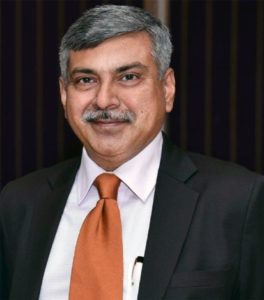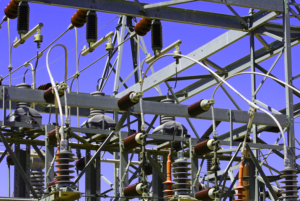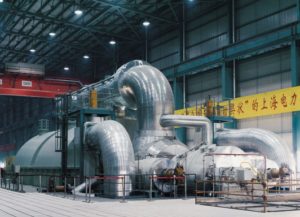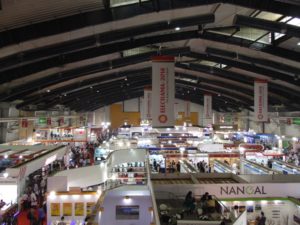
Indian Electrical & Electronics Manufacturers’ Association, popularly known as IEEMA, has been representing and serving the electrical equipment and allied industries for nearly seventy years now. We have Sunil Misra, in this exclusive exchange, discussing a range of subjects like the industry’s performance and outlook, impact of GST, role of Chinese companies, etc. Misra is confident that this edition of ELECRAMA—globally the biggest trade event in the electrical equipment space—will impart a new dimension to “electricity”. An interaction by Venugopal Pillai.
The electrical equipment industry, as estimated by IEEMA grew by around 4.25 per cent in FY17. What are the overall trends in the industry?
India has seen significant and continued growth in recent times in its GDP resulting in substantial rise in purchasing power of middle class and rural India. In order to keep pace with the growing economy, the present government has undertaken initiatives in coal and renewable sector to strengthen the power sector infrastructure within the country. The increased government spending on urban & rural electrification in schemes like IPDS (Integrated Power Development Scheme) and DDUGJY (Deen Dayal Upadhyaya Gram Jyoti Yojana), has further spurred the demand of electrical equipment in India.
The electrical and industrial electronics industry witnessed a 4.25 per cent year-on-year growth in FY17. The industry exported Rs.38,580 crore ($6 billion) worth of electrical equipment in FY16, and Rs. 35,276 crore ($5.25 billion) in April to February period of FY17.
During the XII Plan period, solar power addition achieved 104 per cent in overall renewable addition of 32GW as against 89 GW from conventional sources. Around 293 global and domestic companies have committed to generate 266 GW of solar, wind, mini- hydel and biomass-based power in India over the next 5-10 years. The initiative would entail an investment of more than $300 billion. Further, there has been rise in M&A activities in recent past.
GST has been the biggest policy change in recent history. Please summarize your views on this new regime and the impact that you see GST having on the electrical equipment industry?
 Within the electrical industry, there are mixed feelings about the impact of GST. The reduction in the rate for coal to 5 per cent will bring down the cost of procurement slightly, mainly benefitting thermal projects under operation. How much it will cushion the increase in the operational cost on account of a higher rate for services under GST is yet to be seen.
Within the electrical industry, there are mixed feelings about the impact of GST. The reduction in the rate for coal to 5 per cent will bring down the cost of procurement slightly, mainly benefitting thermal projects under operation. How much it will cushion the increase in the operational cost on account of a higher rate for services under GST is yet to be seen.
IEEMA is seriously concerned about higher rate of 28 per cent GST announced on some electrical products and has made a representation to the government for reclassification of GST on these products from 28 per cent to 12 per cent. Through our efforts, GST rates of some of these products were brought down to 18 per cent, which is good news for electrical equipment manufacturers.
It was recently discussed in Parliament that the government is “concerned” about the role of Chinese companies as developers in the Indian power transmission sector. What is your view?
Power transmission is an important and critical infrastructure of the country. It is as important as power generation, power distribution, or even telecommunication. China has a very special relation with India, which goes back to Hsüan-tsang and Fa-hien and the common historical bonds being Buddhism and tea. On the other hand, India and China share a border which is over 4000 kms, in which there are serious disputes on the eastern and western side, which we have inherited as a legacy dating back to 19th century. This dispute has seen a month-long war in 1962 despite of which the dispute continues. This dispute keeps taking different forms of expression every few months. Another dimension of India China relationship is the bilateral trade of about $70 billion. Clearly our relationship with China is unique and cannot be compared with that with any other country.
Due to this unique relationship, it is not advisable to have Chinese companies get into any type of lead role in the space of any critical infrastructure including power transmission sector. Hence the concerns expressed in Parliament are well founded.
Import of Chinese electrical equipment (across power generation, transmission and distribution) has been a contentious issue for several years. What is your reading of the current trends?

Imports of Chinese electrical equipment across all sectors should not be encouraged, particularly where the equipment are intelligent and have embedded electronics. Such intelligent equipment in the power system will pose a potential risk of sabotage and examples of such incidents are very many across the world. With over 40 per cent over-capacity, the Indian manufacturers are capable of meeting the demands of the power sector indigenously.
Some Chinese companies (e.g. TEBA, BTW) have set up manufacturing facilities in India. How has the Indian industry reacted to this?
Chinese companies setting up manufacturing facilities on Indian soil is a welcome step as the competition is on a level-playing field. Such Chinese companies are Indian entities and will give employment, conform to Indian laws and pay taxes.
National High Power Test Laboratory Pvt Ltd (NHPTL) recently started commercial operations, albeit of the first phase. How do you see the positive impact of this important development on Indian manufacturers?
Short-circuit testing in India is very expensive at present. With the ambitious plan of the government to make electricity available to all 24×7, the present testing facilities are inadequate with long waiting time and therefore NHPTL is a welcome development. We need to expand our testing facilities further to meet the growing demand and aspiration to enhance India’s global footprint.
Elecrama 2018 is round the corner. Tell us in brief about the unique features that this edition would be offering to exhibitors and visitors.
ELECRAMA 2018 will undergo a complete digital transformation and will be full of surprises for all the visitors, exhibitors and stakeholders. ELECRAMA 2018 will have five days of exhibition from March 10, 2018 to March 14, 2018, at IEML, Noida.

We will showcase new discussion forums and will have people from various related segments across the globe marking their presence for the first time. Around 30-40 per cent of the audience will be from segments that were never present on this forum before, like power electronics, electro-mobility and power storage.
In addition to the World Utility Summit, ELECRAMA 2018 has also introduced the World Contractors Consultants and Channel Partners Congress (W4C), where representatives from across the world will integrate and build relations with the Indian supplier segment. Global Electrical Equipment Manufacture’s Summit (GEMS), a global platform will be created for the first time for the electricity equipment manufacturing sector to engage and collaborate to strengthen the industry roots further.
A fresh and progressive step in this year’s ELECRAMA is also including the young generation in this age-old industry through E-Tech Next. It is a start up pavilion being introduced for the first time in association with TIE and NASSCOM.
Through ELECRAMA 2018 we aim to give new direction and new meaning to ‘electricity’. It will not be a mere exhibition, but we promise it to be an experience.


